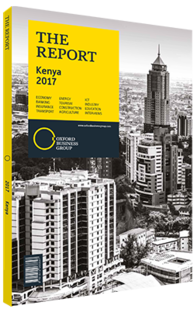Benson Wairegi, Group Managing Director and CEO, Britam: Interview

Interview: Benson Wairegi
How would you rate the overall level of competition within the insurance sector?
BENSON WAIREGI: The level of competition is quite high when compared not only to the East African region, but to sub-Saharan Africa as a whole. In Kenya, we have more than 45 life and non-life insurance companies. You can also gauge the level of competition by looking at the number of new players, particularly international players, that have recently entered the Kenyan market. This is largely driven by the high level of financial development in the country. In comparison to the rest of the region, it has the largest financial services industry, which includes insurance. That being said, market penetration for insurance products is still very low at approximately 3% overall. This explains why the insurance sector is so attractive and competitive. As a result, insurance companies are competing mainly on price rather than quality of product or service delivery.
What impact will the new insurance capital adequacy requirements have on the market?
WAIREGI: These new requirements are going to have a very large impact on the market. Essentially, this is a move away from the former prescriptive regime, where the Insurance Act stipulated the amount of capital an insurance company needed to have. With risk-based requirements, the necessary capital depends on the profile and volume of the risk each company is taking on in its books. As a result, many companies will be adversely affected by this new rule and will have to start looking for additional capital. This means that if companies are not able to find additional capital, they will have to raise it by searching for investors. Ultimately, this will drive consolidation within the market.
What are the primary obstacles to increasing access to insurance?
WAIREGI: The first obstacle is the cultural mindset of the people. Traditionally, Kenyans rely mostly on immediate and extended family, particularly their elders, if they face financial difficulty. As a result, Kenyans wouldn’t look at insurance as a solution to these challenges. The second obstacle is awareness. For Kenyans, insurance falls under discretionary spending. People will only buy insurance after they have met their basic needs, such as food, clothing, school fees and so on. Because people’s disposable income is limited, they don’t often buy insurance. Third, insurance is more of a push product than a pull product. In other words, insurance must be sold, and when you’re dealing with low levels of awareness, this compounds the challenge. Fourth, people have typically viewed insurance with a certain level of distrust.
So how do you address these obstacles? With the digitisation of Kenya, there are more and more ways to reach consumers, with mobile technology and bancassurance being two prime examples. Bancassurance has grown dramatically within the last two to three years, but as mobile phone and internet penetration continue to increase, I see direct delivery of insurance products becoming the trend going forward.
How do you see the need for agricultural sector insurance products evolving?
WAIREGI: This is a very important area for insurance, as agriculture contributes about 30% of Kenya’s GDP. With our dependence on rain-fed agriculture, climate change poses a very large risk for the sustainability of the sector. Much of our agricultural activity is related to subsistence farming; we don’t have large numbers of commercial farmers. The need for agricultural insurance is there and the risks are very high; however, the capacity of companies to actually underwrite those risks is limited. The only way I can see the sector evolving is if there is a public-private partnership model, where the Kenyan government partners with an underwriter, similar to how we have seen NGOs partner with insurance companies in the country.
You have reached the limit of premium articles you can view for free.
Choose from the options below to purchase print or digital editions of our Reports. You can also purchase a website subscription giving you unlimited access to all of our Reports online for 12 months.
If you have already purchased this Report or have a website subscription, please login to continue.

